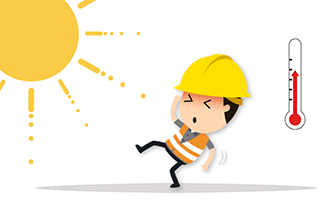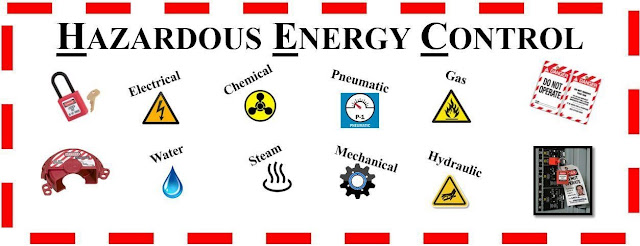Chemicals Hazards, Storage &
Protection
Hazardous Area Classification (HAC)
01. Many
chemicals are used in industry some of them are may be irritating and result in
serious injuries and bums on the face, body, hands, arms, and legs, and also
can be flammable, explosive, toxic and result in fire and loss of life. Proper Personal
Protective Equipment-PPE‟s must be provided for the employees
who are dealing with chemicals. (such as; PVC gloves, aprons, overalls, Breathing
Appratus-B.A. and face shield … etc.)
02. All the
chemicals shall properly stored as per the Safety Data Sheet-SDS in well
ventilated, illuminated, protected, and secured area, away from other
materials. Store all flammable chemicals (solvents, petroleum products)
separated from other chemicals. Do not store near heat or where strong sunlight
will strike them. Provide the required signage in the storage area.
03. All chemical substances shall have their Safety Data Sheet (SDS) available with each store. And the name, characteristics, type of hazard, protection and first aid action clearly displayed on the container label. Provide the basic fire protection in the storage area.
04. Source
of clean running water should be available (like; water tapes, eye wash
station) for cleaning and diluting the concentration of harmful chemicals
(acids, base) splashed on the body, skin, hands or in the eyes as a basic first
aid measure.
05 Remove
any contaminated clothing immediately and wash the affected part of
the body by
large amount of water. Seek the medical help immediately.
06. If
employee inhaled large amount of chemical vapours and became unconscious, start
artificial respiration. Seek the medical help immediately. Display the
emergency contact number in the storage area.
07.Ensure No
source of ignition in chemical storage area. No eating or drinking of any type
is allowed while using or handling chemical substances. Employees to be trained
the safe handling of chemicals.
08. Appropriate number of Fire extinguishers (dry chemical powder or C02) should be available for each chemicals storage area. All employees to be trained on the basic practical firefighting training.
Safeguarding Your Construction Site: A Practical Guide
09. Dilution
of Acids - To dilute acids always, add the acid to water NEVER add water to
acids. Do not mix acids with solvents and petroleum products. Do not stir acids
with metal apparatuses. Use glass ones.
10. Keep
floors clean in the chemical storage & handling area, do not allow them to
become slippery. In case of spillage or leaks of dangerous chemicals the area
shall be cordoned off and the HSE Department notified. Spill kit to be made
available in the storage area.
11. If you
are in doubt about any chemical, consider it very hazardous and ask your supervisor
or ask the HSE Department. Do not store any chemicals in disposable water bottles.
Chemical container should be without any labels.
12. Empty
containers or bottles, should not be used for domestic or private use and
should be disposed off in a safe way as per the company/local government
guidelines.









